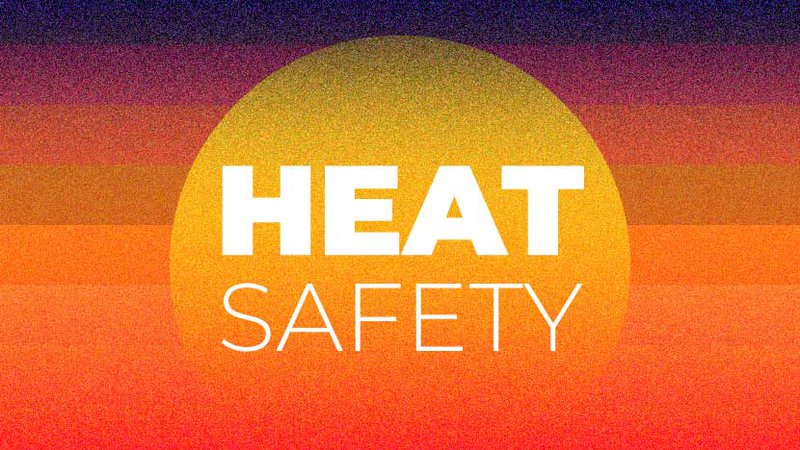Whether it’s extreme heat, poor air quality, or hurricanes and tropical storms, we’re seeing the growing effects of climate change as related conditions become more frequent and severe. Every year, New York City experiences harsher heat waves that impact residents, especially vulnerable populations. As the city continues to adapt to the heat crisis, New Yorkers can seek assistance through the resources we gathered below.
What is a Heat Wave?
A heat wave is a period of abnormally hot weather generally lasting more than two days. While definitions vary, a heat wave is usually measured relative to the usual local climate and relative to normal temperatures for the season. Heat waves can occur with or without high humidity. They have the potential to cover a large area, exposing a high number of people to hazardous heat.
Who is at Risk?
Those at greatest risk include: infants and children up to four years of age, people 65 years of age and older, those receiving medical treatment, and users of alcohol or other substances. More specifically, NYC Emergency Management lists the following conditions as risk factors for heat illness:
- Heart disease or other cardiovascular issues
- Asthma or other respiratory conditions
- Kidney disease
- Diabetes
- Schizophrenia, bipolar disorder, or other psychiatric disorders
- People in larger bodies have a higher risk from heat illness
- Disabilities or access or functional needs that mean you have trouble regulating body temperature, including being on medications that make you more susceptible to heat impacts
What are the Signs of Heat Illnesses?
There are a few types of heat illnesses, as described by the National Institute for Occupational Safety and Health (NIOSH): Heat Stroke, Heat Exhaustion, Heat Syncope (Fainting), Heat Cramps, and Heat Rash.
Signs of a Heat Stroke
Heat strokes can be fatal. Call 911 if you experience the following symptoms: hot, dry skin, nausea or vomiting, trouble breathing, fast pulse, weakness or dizziness, confusion or loss of consciousness.
Signs of Heat Exhaustion
Go to a clinic or emergency room for medical evaluation and treatment if you experience the following symptoms: heavy sweating and cold, clammy skin, muscle cramps, lightheadedness or dizziness, headache or nausea.
Signs of Heat Syncope
Heat syncope is a fainting (syncope) episode or dizziness that occurs when standing for too long or suddenly standing up. The symptoms can include: fainting, dizziness, or light-headedness.
Signs of Heat Cramps
Heat cramps occur during strenuous activity. It may also be a symptom of heat exhaustion. Heat cramp symptoms include: muscle cramps, pain, or spasms in the abdomen, arms, or legs.
If you experience any of the above symptoms:
- Move to a shaded, cool area and remove outer clothing.
- Cool quickly using the following methods:
- Wet the skin with cold water or an ice bath
- Place cold wet cloths on the skin
- Soak clothing with cool water
- Circulate surrounding air around to speed cooling.
- Remove unnecessary clothing, including shoes and socks.
- Slowly drink water, clear juice, or a sports drink every 15 to 20 mins.
Signs of Heat Rash:
Heat rash is a skin irritation caused by excessive sweating during hot, humid weather. Symptoms can include: red clusters of pimples or small blisters commonly on the neck, upper chest, groin, under the breasts and in elbow creases.
What to Do:
- Go to cooler, less humid environments
- Keep the rash area dry
- Apply powder to ease discomfort but do not use ointments and creams
New York City Resources
Cool It! NYC shows the locations of various water features like drinking fountains, beaches, pools, and spray showers.
To find New York’s most shaded areas, use the map to find parks with particularly thick tree coverage.
The NYC Department of Environmental Protection uses fire hydrant spray caps during heat emergencies. You can ask for your hydrants to be opened legally with a City-approved spray cap (free of charge). Call or find your local firehouse to have a hydrant fitted with a spray cap.
NYC Beat the Heat’s website provides valuable information on what to do before and during Extreme Heat Advisories. For example, you should visit their Utility Disruptions page for more information about what to do during power outages. Their website details information on how to find a cooling center near you.
Workers
Employers, utilize these resources to protect workers from extreme heat, by the Occupational Safety and Health Administration (OSHA), United States Department of Labor.
Connect for Resources
For assistance with emergency preparedness and resources, please feel welcome to reach out to our office for support. Call 212-669-7250 or email GetHelp@advocate.nyc.gov.
During an emergency, call or text 911.
By Deputy Public Advocate of Infrastructure & Environmental Justice Kashif Hussain, Community Organizer for Infrastructure & Environmental Justice David Kahn, Community Organizer for Infrastructure & Environmental Justice Sasha St. Juste, Infrastructure & Environmental Justice Intern Ava Sklar.
